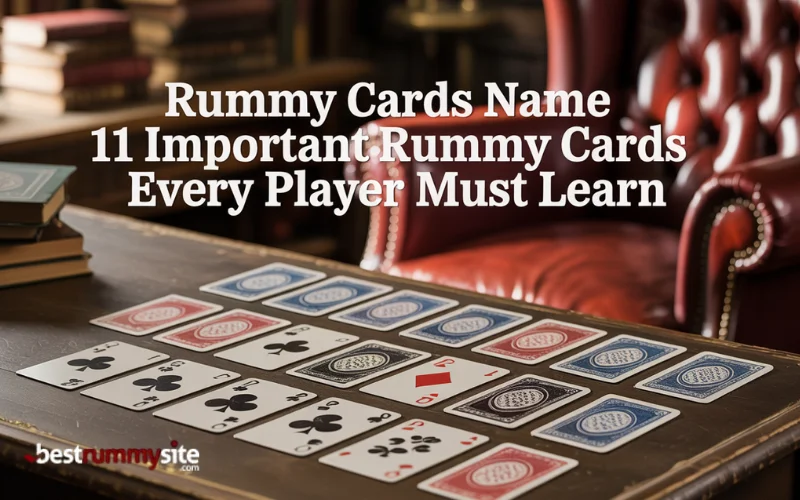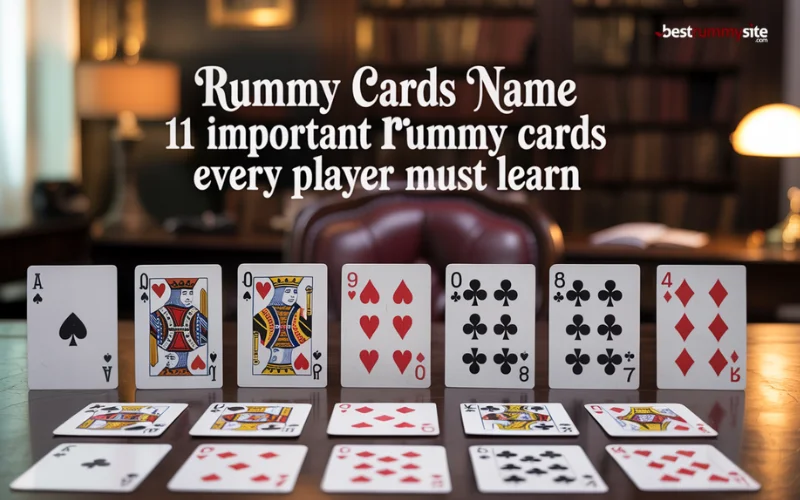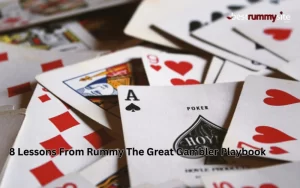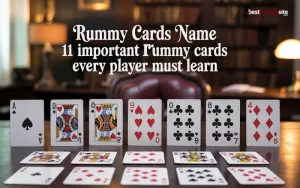Rummy is one of the most popular card games played across the world. It is a blend of strategy, skill, and timing that keeps players engaged for hours. To master this game, one must first understand the different rummy cards name and their roles in forming sets and sequences rummy sites. Knowing the importance of each card helps players make better decisions during the game and improves their chances of winning. This detailed guide will walk you through the 11 important rummy cards name every player must learn to play like a pro.
The Ace Card in Rummy
The Ace is one of the most powerful cards in rummy. It can be used both as the lowest and the highest card depending on the sequence. In a pure sequence, it can be placed before the 2 card or after the King. For example, Ace-2-3 or Queen-King-Ace are both valid sequences. Because of its flexible nature, the Ace card is a valuable asset in any rummy hand. However, players must be careful because if it remains unmatched when the game ends, it carries a high penalty point value.
The King Card in Rummy
Among the rummy cards name, the King holds an essential place as the highest face card in each suit. It can form part of both pure and impure sequences. For example, a valid sequence could be Jack-Queen-King or King-Ace-2 depending on how the player arranges their cards. The King often helps complete a sequence when face cards dominate a hand. It is also a 10-point card, so players must aim to use it in a sequence quickly to avoid losing high points if the opponent declares first.
The Queen Card in Rummy
The Queen card adds elegance and value to the deck. In rummy, it carries 10 points and plays a crucial role in completing sequences involving face cards. A player can form combinations such as Jack-Queen-King or 10-Jack-Queen to build pure sequences. Knowing when to keep or discard the Queen depends on the composition of your hand. If you are holding multiple face cards, it is better to form a sequence early to reduce your point load.
The Jack Card in Rummy
The Jack card is another 10-point face card that has a strong presence in rummy. It is often used in sequences like 10-Jack-Queen or Jack-Queen-King. The Jack is also special in certain variations of rummy, such as Indian rummy, where one card is randomly selected as a Joker for that round. If the Jack becomes the Joker, it acts as a wildcard that can substitute for any missing card in a set or sequence. Understanding the Jack’s role helps you manage high-value cards effectively.
The Number Cards in Rummy
Number cards are the backbone of rummy. They range from 2 to 10 in each of the four suits: hearts, spades, clubs, and diamonds. These cards are essential for forming pure sequences and sets. For example, 4-5-6 or 7-8-9 are valid pure sequences. The value of these cards equals their face number, making them safer to keep compared to high-value cards. A good rummy strategy involves using number cards efficiently to build combinations that minimize points.
The Joker Card in Rummy
When discussing rummy cards name, the Joker card deserves special attention. It is one of the most powerful and strategic cards in the game. There are two types of Jokers in rummy: printed Jokers and wild Jokers. A printed Joker is the card that has the Joker image on it, while a wild Joker is a random card selected at the start of the game that acts as a substitute for any missing card. Jokers help in completing impure sequences or sets, for example, 7-8-Joker or 4-4-Joker. Knowing how to use Jokers wisely often determines the outcome of the game.
The Printed Joker Card
The printed Joker is the classic wildcard that can replace any card rummy cards name in a set or sequence except in a pure sequence. Since there are two printed Jokers in a deck, they can significantly impact gameplay. If you have a printed Joker, you can complete combinations faster and declare before your opponent. For example, if you have 9-10-Joker, it can act as Jack to complete the sequence. Understanding the printed Joker’s value can turn a weak hand into a winning one.
The Wild Joker Card
A wild Joker is chosen at random from the deck at the beginning of the game. For example, if the 5 of hearts is picked as the wild Joker, then all 5s from every suit act as Jokers for that game. The wild Joker can replace any missing card to complete a set or impure sequence. Smart players use the wild Joker to quickly finish their combinations and reduce points. However, it cannot be used in a pure sequence, so balancing its use is key.
The Low-Value Cards
Low-value cards like 2, 3, and 4 might not look powerful at first, but they play a major role in reducing your overall point load. In rummy, if you lose with high-value cards like Kings or Queens, you get penalized heavily. Keeping low-value cards and forming sequences with them minimizes your risk. For instance, a sequence like 2-3-4 is both safe and effective. Expert players often prefer keeping low-value cards to stay flexible throughout the game.

The Middle-Value Cards
Cards like 5, 6, 7, and 8 are considered middle-value cards and are often very useful in forming multiple sequences. They can connect with both low and high cards, making them versatile. For example, a sequence like 4-5-6 or 6-7-8 can easily be built if you draw the right cards. These middle-value cards are the backbone of smart rummy play as they balance the game and help in quick declarations.
The High-Value Cards
High-value cards include 10, Jack, Queen, King, and Ace. While they are powerful for forming face card sequences, they can be risky if left unmatched. Many players prefer discarding these cards early unless they see a clear chance to make a valid combination. Managing high-value cards carefully is crucial to avoid losing with heavy points if your opponent declares first.
How Understanding Rummy Cards Name Improves Your Game
Knowing the role of each rummy card helps you make strategic choices during the game. It allows you to identify which cards to keep, which to discard, and how to use Jokers effectively. By understanding the value of each card, you can reduce your points, form sequences faster, and increase your chances of winning. Memorizing rummy cards name also helps in predicting your opponent’s moves, as you can guess which cards they are holding based on their discards.
Conclusion
Mastering the rummy cards name is the first step toward becoming a skilled player. Each card, from the Ace to the Joker, plays a unique role in the game. Understanding their value and purpose helps in forming sequences and sets more effectively. Whether it is the powerful Ace, the flexible Joker, or the safe low-value cards, every card contributes to your strategy. The next time you play, remember these 11 important rummy cards name and use them wisely to outsmart your opponents and secure victory in every round.







